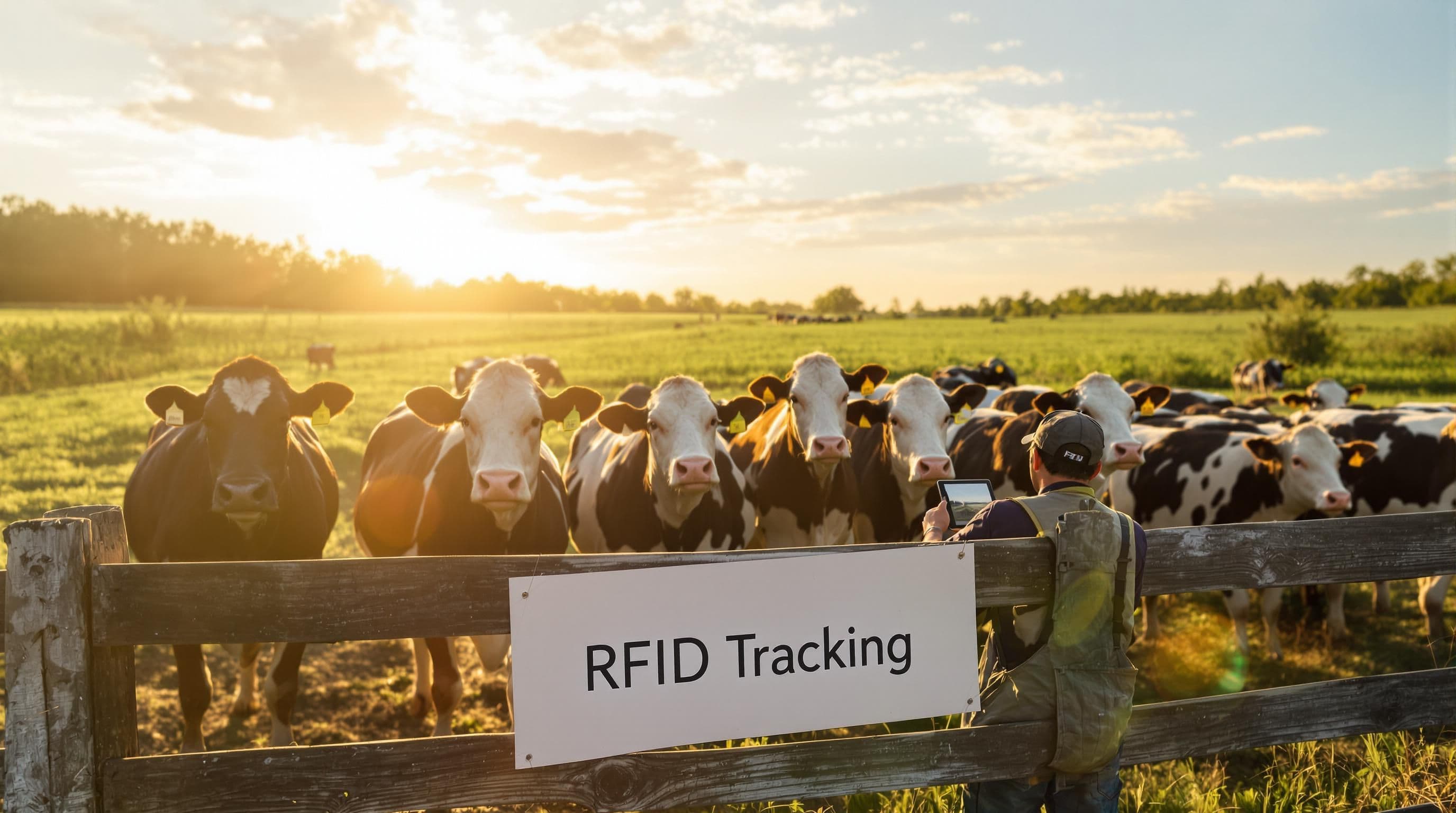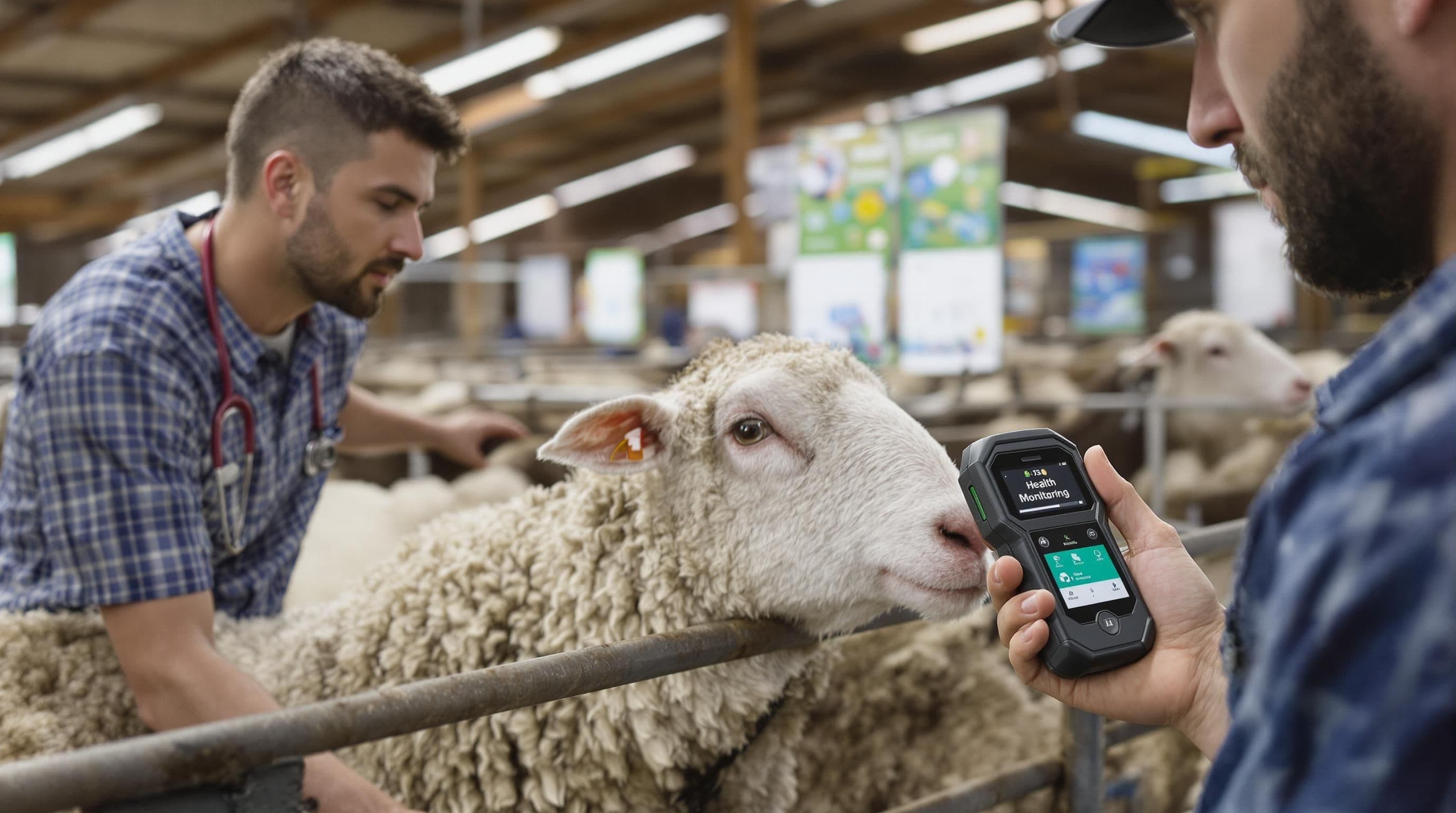
RFID tags are quietly changing the way animals are tracked on farms and in the wild. Some modern systems can now track over 100 animals per second from up to 12 meters away. That sounds futuristic, right? Yet the real surprise is how RFID is now being used not just for location, but to spot illnesses early and prevent outbreaks before they start. Here is why farms and research teams are rethinking everything they know about animal management.
Table of Contents
- How Rfid For Animal Tracking Works
- Benefits Of Rfid In Livestock And Wildlife Management
- Choosing The Right Rfid System For Your Needs
- Best Practices For Implementing Rfid In Agriculture
Quick Summary
| Takeaway | Explanation |
|---|---|
| RFID enhances animal health monitoring | RFID systems allow farmers to detect illnesses early by monitoring movement patterns and behavioral indicators. |
| Precision tracking improves inventory management | RFID provides accurate, real-time data on animal populations, locations, and resource allocation. |
| Choose the right RFID frequency for needs | Assess low, high, or ultra-high frequency options based on specific tracking scenarios and environments. |
| Proper tag placement is crucial | Effective RFID tracking requires correct tag positioning to minimize loss and ensure readability. |
| Plan for ongoing training and adaptation | Successful RFID implementation involves staff training and adapting systems according to challenges faced. |
How RFID for Animal Tracking Works
RFID technology transforms animal tracking by providing precise, automated identification and monitoring solutions for agricultural and wildlife management. At its core, RFID uses electromagnetic fields to capture and track unique identification data from small electronic tags attached to animals.
![]()
The Technical Mechanics of RFID Tracking
RFID systems operate through two primary components: transponders (tags) and transceivers (readers). According to international standards ISO 11784 and ISO 11785, these tags contain a unique identification code that allows for individual animal recognition. These tags can be passive integrated transponders (PIT) that do not require battery power, making them lightweight and durable for long-term animal tracking.
The tracking process begins when a transceiver emits a radio frequency signal. When an animal with an RFID tag enters the electromagnetic field, the tag becomes activated and transmits its unique identification code back to the reader. This seamless communication enables farmers and researchers to instantly identify and log information about specific animals without direct physical contact.
Practical Applications in Animal Management
Research in livestock management demonstrates that RFID technology provides multiple benefits beyond simple identification. Farmers can track an animal’s location, monitor health records, manage breeding programs, and maintain precise inventory counts. For instance, ear tags with embedded RFID chips allow instant recognition of individual cattle, sheep, or other livestock.
Wildlife researchers also utilize RFID for migration tracking, population studies, and conservation efforts. Scientific studies have shown that these non-invasive tags can provide critical data about animal movements and behaviors without significantly disrupting natural patterns.
The versatility of RFID for animal tracking makes it an increasingly essential tool across various sectors. From small farm operations to large-scale agricultural enterprises, this technology offers unprecedented precision in animal identification and management. By providing real-time, accurate data, RFID systems help farmers and researchers make more informed decisions about animal health, productivity, and overall management strategies.
Benefits of RFID in Livestock and Wildlife Management
RFID technology has emerged as a transformative tool in animal management, offering unprecedented advantages for both livestock producers and wildlife researchers. By providing real-time tracking and comprehensive data collection, these systems revolutionize how we understand and interact with animal populations.
Enhanced Health Monitoring and Disease Prevention
Research published in the National Center for Biotechnology Information demonstrates that RFID technology significantly improves animal health management. Each tagged animal becomes part of a sophisticated tracking system that can quickly identify potential health risks, track vaccination histories, and monitor individual animal conditions.
Farmers can now detect early signs of illness by tracking changes in an animal’s movement patterns or behavioral indicators. This proactive approach allows for immediate intervention, reducing the spread of diseases and minimizing potential economic losses. For livestock operations, this means faster isolation of potentially sick animals and more targeted treatment strategies.

Precision in Inventory and Resource Management
RFID tags provide unparalleled accuracy in animal inventory tracking. Unlike traditional manual counting methods, these electronic tags enable instant population counts and individual animal identification. Ranchers and farm managers can track exact numbers, locations, and movements of their herds with minimal human intervention.
The technology extends beyond simple counting. It allows for precise tracking of feed consumption, breeding cycles, and individual animal performance metrics. This data-driven approach enables more strategic resource allocation, helping farmers optimize feed costs, breeding programs, and overall farm productivity.
Wildlife Conservation and Research Applications
Wildlife researchers have discovered remarkable applications for RFID technology in conservation efforts. By using non-invasive tracking methods, scientists can gather critical data about animal migration patterns, population dynamics, and ecological interactions without significantly disrupting natural behaviors.
These tracking systems provide insights into animal movements, habitat usage, and potential environmental challenges. Researchers can now monitor endangered species, track migration routes, and develop more effective conservation strategies. The ability to collect detailed, long-term data helps create more comprehensive understanding of complex ecological systems.
As agricultural and research technologies continue to evolve, RFID stands out as a powerful tool for animal management. Its ability to provide accurate, real-time information transforms how we approach livestock production and wildlife research, offering unprecedented levels of insight and control.
Choosing the Right RFID System for Your Needs
Selecting the appropriate RFID system for animal tracking requires careful consideration of multiple technical and practical factors. The right solution depends on your specific management needs, animal type, environment, and tracking objectives.
Understanding RFID Frequency Ranges
Research from animal monitoring studies reveals three primary RFID frequency ranges: low frequency (LF), high frequency (HF), and ultra-high frequency (UHF). Each frequency range offers distinct advantages for different animal tracking scenarios.
Low-frequency systems work well for close-range tracking and are less susceptible to interference. High-frequency tags provide moderate read ranges and work effectively in moderate environmental conditions. Ultra-high frequency (UHF) systems offer the most flexibility, with research indicating reading ranges up to 12 meters and the ability to detect over 100 animals per second. However, UHF systems can be more sensitive to environmental factors like water and body tissue, requiring careful system design and implementation.
Here is a comparison table to help you understand the key differences between the primary RFID frequency ranges used in animal tracking applications.
| Frequency Range | Typical Read Range | Strengths | Considerations |
|---|---|---|---|
| Low Frequency (LF) | Up to 30 cm | Less interference, good for close proximity | Short read range, slower data transfer |
| High Frequency (HF) | Up to 1 meter | Moderate range, suitable for various conditions | Might still have some interference |
| Ultra-High Frequency (UHF) | Up to 12 meters | Long-range, fast (100+ animals per second) | Sensitive to water/body tissue, needs setup |
System Compatibility and Standards
International standards ISO 11784 and ISO 11785 play a crucial role in ensuring RFID system reliability and compatibility. These standards specify identification code structures and communication protocols between transponders and transceivers. When choosing an RFID system, verify that it complies with these international regulations to guarantee consistent performance and interoperability.
Consider factors such as:
- Tag durability: Assess the physical environment and animal behavior
- Read range requirements: Determine the distance at which you need to track animals
- Data storage capacity: Evaluate the amount of information you need to record
- Environmental resistance: Select tags that can withstand your specific climate and conditions
Practical Considerations for Implementation
Beyond technical specifications, successful RFID implementation requires comprehensive planning. Consider the total cost of ownership, including tag costs, reader infrastructure, and potential maintenance expenses. Some systems might require additional investments in antenna placement, data management software, and staff training.
For livestock operations, the goal is to balance technological sophistication with practical usability. A system that provides robust tracking and health monitoring without creating unnecessary complexity will deliver the most value. Wildlife researchers might prioritize non-invasive tags that minimize disruption to natural behaviors, while farm managers might focus on systems that integrate seamlessly with existing management protocols.
Ultimately, the right RFID system is one that meets your specific tracking needs, offers reliable performance, and provides actionable insights into animal behavior, health, and movement. Consulting with RFID technology specialists and conducting pilot tests can help you make an informed decision tailored to your unique requirements.
Best Practices for Implementing RFID in Agriculture
Successful RFID implementation in agricultural settings requires strategic planning, careful execution, and a comprehensive understanding of technology integration. Farmers and livestock managers must approach RFID adoption with precision and a clear implementation strategy to maximize technological benefits.
Proper Tag Selection and Application
According to the Alberta Ministry of Agriculture and Forestry, correct tag placement is critical for effective RFID tracking. For cattle, experts recommend positioning ear tags within the first quarter of the ear between two distinct ear ribs. This specific placement reduces tag loss and ensures consistent electronic scanning.
When selecting RFID tags, consider factors such as:
- Tag durability: Resistance to environmental conditions
- Animal comfort: Lightweight designs that minimize irritation
- Scanning reliability: Clear signal transmission capabilities
- Compatibility: Matching tags with appropriate readers and farm management systems
Below is a checklist table outlining key considerations for selecting and applying RFID tags in agriculture.
| Consideration | Why It’s Important | Addressed? |
|---|---|---|
| Tag Durability | Ensures longevity in harsh environments | Yes |
| Animal Comfort | Avoids irritation or harm to animals | Yes |
| Scanning Reliability | Guarantees accurate data collection | Yes |
| Compatibility | Integrates with systems/readers | Yes |
| Proper Placement | Reduces loss, ensures readability | Yes |
Implementation and Monitoring Protocols
Research from the USDA’s National Agricultural Library highlights the importance of establishing consistent identification protocols from birth. This approach ensures comprehensive tracking throughout an animal’s lifecycle. Some advanced systems now incorporate bio-sensing capabilities, enabling early disease detection by monitoring temperature and movement patterns.
Key implementation strategies include:
- Developing standardized tag application procedures
- Training staff on proper RFID handling and scanning techniques
- Creating comprehensive digital record-keeping systems
- Regularly calibrating and maintaining RFID equipment
Addressing Technical and Practical Challenges
Guidelines published in the National Center for Biotechnology Information emphasize the importance of considering animal well-being during RFID system implementation. Factors like tag weight, placement, and potential interference from animal bodies can significantly impact system effectiveness.
Farmers should anticipate and mitigate potential challenges by:
- Conducting pilot tests before full-scale implementation
- Monitoring tag performance and animal response
- Adapting systems to specific farm environments
- Investing in ongoing technology training for farm personnel
Successful RFID implementation transcends mere technological adoption. It requires a holistic approach that balances technological capabilities with practical agricultural needs. By carefully selecting appropriate systems, training staff, and maintaining flexible implementation strategies, farmers can transform their animal management practices and unlock unprecedented levels of operational efficiency.
Frequently Asked Questions
What is RFID technology in animal tracking?
RFID (Radio Frequency Identification) technology uses electromagnetic fields to automatically identify and track animals through unique identification tags attached to them. It enables precise tracking and monitoring of animal movements and health data.
How does RFID improve animal health monitoring?
RFID enhances health monitoring by allowing farmers to track changes in animal behavior and movement patterns, enabling early detection of potential illnesses and facilitating timely interventions to prevent disease outbreaks.
What are the benefits of using RFID for livestock management?
RFID offers numerous benefits for livestock management, including real-time tracking of animal populations, improved inventory accuracy, better resource allocation, enhanced health monitoring, and more strategic breeding program management.
How do I choose the right RFID system for my farm?
Choosing the right RFID system involves assessing your specific tracking needs, considering factors like frequency range (LF, HF, UHF), system compatibility, environmental conditions, and practical implementation strategies to ensure the system meets your operational requirements.
Upgrade Your Animal Tracking with Smart RFID Solutions
As highlighted in “RFID for Animal Tracking: Efficient Solutions for 2025,” staying ahead in animal management is no longer about just keeping count. You want real-time data, seamless health monitoring, and easy herd management. If you have ever struggled with unreliable tags, missed early disease signs, or the headaches of manual livestock tracking, you know how important a dependable RFID system can be. The right products help you catch problems early, save money, and gain peace of mind about your animals’ well-being.

Ready to turn RFID benefits into real on-farm results? At FenceFast.ca, we stock trusted RFID solutions and animal management tools made for Canadian farms. Explore our user-friendly website to find the tags, readers, and equipment that fit your herd and workflow. Visit FenceFast.ca now and take the next step toward smarter, more efficient livestock management—before another year of guesswork costs you more.
